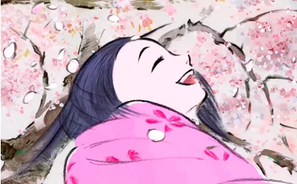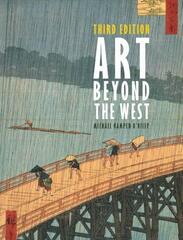 In these upcoming posts I will point out some particularly interesting parts of the film that tie into important aspects of Japanese aesthetics and techniques of art-makingOf all of the Japanese animation film studio, Studio Ghibli’s films, The Tale of the Princess Kaguya is arguably the most rooted in Japan’s secular and religious history. Full of references to traditions in both artmaking and society, it not only celebrates Japanese religious and secular culture but also looks at and brings up important questions about certain less than perfect parts of that culture.  I also will address the broader philosophical ideas that shaped Japan’s culture, connecting these concepts from the film with quotes from the textbook Art Beyond the West by Michael Kampen O’Riley. The film Princess Kaguya is a visual masterpiece created appropriately in the popular Japanese anime style, an animation style which incorporates many historic Japanese illustration tendencies and traits of the past. This seemingly small yet incredibly effective choice for the movie, as well as the Studio's other films, makes it clear that this film’s intent is not just to look at and analyze the past but also to examine the present and elude to the future. While the movie may take on more complex meanings to those familiar with the artistic traditions and culture of Japan, Kaguya also lets those who have no such context appreciate and connect with the film and come away with new enlightening ideas about the world, life, and being human. I will begin by examining the Chigir-e torn paper artistic technique, then take a look at the Haboku (Broken Ink) painting technique, and finish with Pureland Buddhist imagery and philosophy. Together these different historic and cultural tie-ins will highlight some interesting aspects of the film, providing a fascinating context for The Tale of the Princess Kaguya. - Bee
0 Comments
Your comment will be posted after it is approved.
Leave a Reply. |
AuthorEach of the Silverfists take turns sharing their thoughts about illustration found in graphic novels, games, album art, and more... Archives
October 2023
Categories |

 RSS Feed
RSS Feed